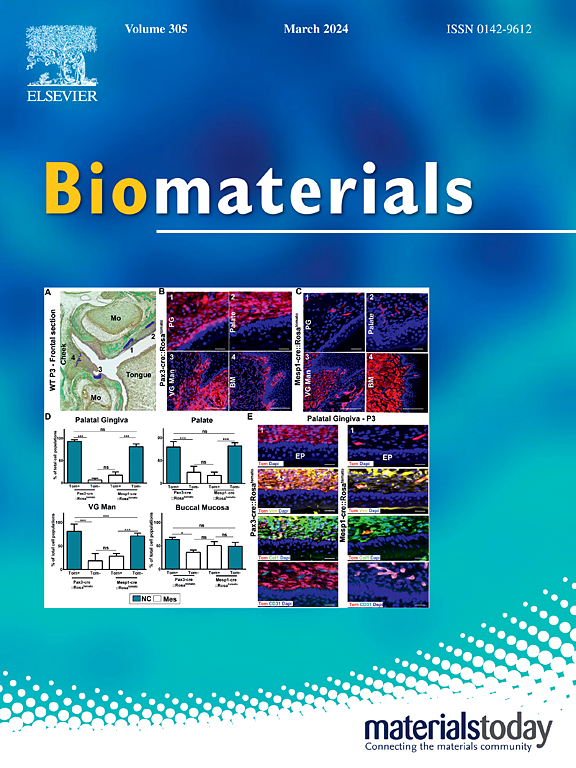Strategies to enhance the penetration of nanomedicine in solid tumors
IF 12.8
1区 医学
Q1 ENGINEERING, BIOMEDICAL
引用次数: 0
Abstract
Nanomedicine was previously regarded as a promising solution in the battle against cancer. Over the past few decades, extensive research has been conducted to exploit nanomedicine for overcoming tumors. Unfortunately, despite these efforts, nanomedicine has not yet demonstrated its ability to cure tumors, and the research on nanomedicine has reached a bottleneck. For a significant period of time, drug delivery strategies have primarily focused on targeting nanomedicine delivery to tumors while neglecting its redistribution within solid tumors. The uneven distribution of nanomedicine within solid tumors results in limited therapeutic effects on most tumor cells and significantly hampers the efficiency of drug delivery and treatment outcomes. Therefore, this review discusses the challenges faced by nanomedicine in penetrating solid tumors and provides an overview of current nanotechnology strategies (alleviating penetration resistance, size regulation, tumor cell transport, and nanomotors) that facilitate enhanced penetration of nanomedicine into solid tumors. Additionally, we discussed the potential role of nanobionics in promoting effective penetration of nanomedicine.
增强纳米医学在实体肿瘤中的渗透策略
纳米医学以前被认为是对抗癌症的一个有希望的解决方案。在过去的几十年里,人们进行了广泛的研究,利用纳米医学来治疗肿瘤。不幸的是,尽管这些努力,纳米医学尚未证明其治疗肿瘤的能力,纳米医学的研究已经达到了瓶颈。在相当长的一段时间里,药物给药策略主要集中在靶向纳米药物给药到肿瘤上,而忽略了其在实体肿瘤中的再分配。纳米药物在实体肿瘤内的不均匀分布导致对大多数肿瘤细胞的治疗效果有限,并严重影响药物递送效率和治疗效果。因此,本文讨论了纳米药物在穿透实体肿瘤中所面临的挑战,并概述了当前的纳米技术策略(减轻穿透阻力,尺寸调节,肿瘤细胞运输和纳米马达),以促进纳米药物穿透实体肿瘤。此外,我们还讨论了纳米仿生学在促进纳米药物有效渗透方面的潜在作用。
本文章由计算机程序翻译,如有差异,请以英文原文为准。
求助全文
约1分钟内获得全文
求助全文
来源期刊

Biomaterials
工程技术-材料科学:生物材料
CiteScore
26.00
自引率
2.90%
发文量
565
审稿时长
46 days
期刊介绍:
Biomaterials is an international journal covering the science and clinical application of biomaterials. A biomaterial is now defined as a substance that has been engineered to take a form which, alone or as part of a complex system, is used to direct, by control of interactions with components of living systems, the course of any therapeutic or diagnostic procedure. It is the aim of the journal to provide a peer-reviewed forum for the publication of original papers and authoritative review and opinion papers dealing with the most important issues facing the use of biomaterials in clinical practice. The scope of the journal covers the wide range of physical, biological and chemical sciences that underpin the design of biomaterials and the clinical disciplines in which they are used. These sciences include polymer synthesis and characterization, drug and gene vector design, the biology of the host response, immunology and toxicology and self assembly at the nanoscale. Clinical applications include the therapies of medical technology and regenerative medicine in all clinical disciplines, and diagnostic systems that reply on innovative contrast and sensing agents. The journal is relevant to areas such as cancer diagnosis and therapy, implantable devices, drug delivery systems, gene vectors, bionanotechnology and tissue engineering.
 求助内容:
求助内容: 应助结果提醒方式:
应助结果提醒方式:


